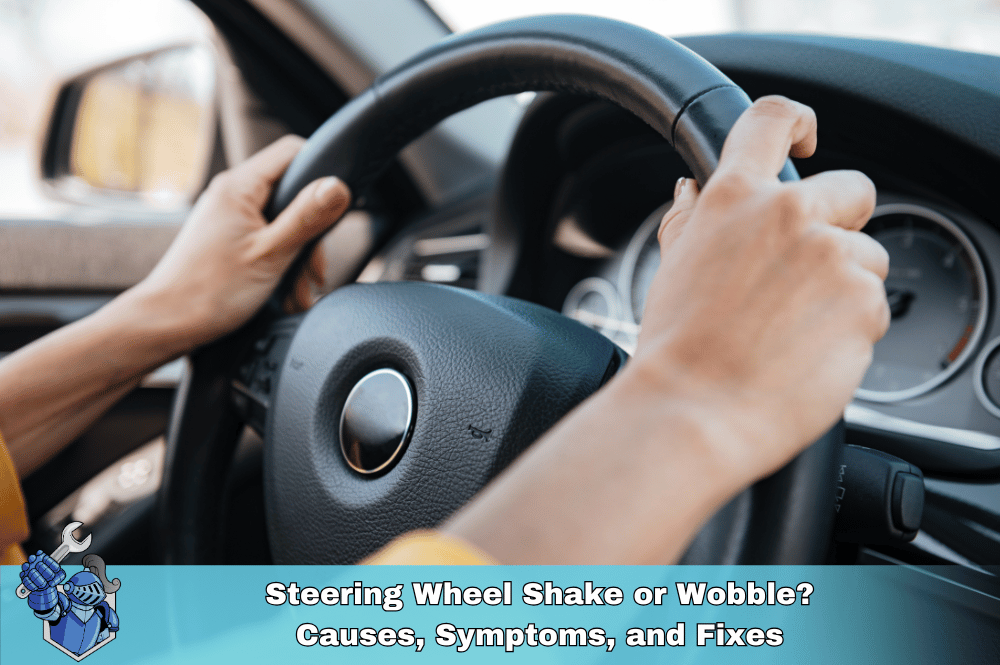Immersive autotainment refers to advanced in-car entertainment systems that use technologies like augmented reality, spatial audio, haptic feedback, and AI personalization to create engaging, multi-sensory experiences for drivers and passengers.
In a world speeding toward autonomy, the interior of your car is no longer just a place to sit and steer—it’s becoming a sensory-rich, connected, intelligent living space. Imagine a vehicle that adapts to your mood, streams ultra-HD movies without buffering, creates a nap-friendly soundscape, or lets your kids explore ancient Rome through VR—all while you cruise to your destination, hands-free. Welcome to the mobile living room era.
This transformation is driven by a convergence of cutting-edge technologies: augmented reality, 5G connectivity, AI personalization engines, and haptic user interfaces, all working in harmony to redefine the future of in-car entertainment and the autonomous vehicle interior.
Augmented Reality Windshields: Beyond Navigation
One of the most exciting advances in connected car technology is the rise of augmented reality windshields. Gone are the days of glancing down at a phone or screen. Instead, tomorrow’s vehicles will project real-time navigation prompts, hazard warnings, weather alerts, and even contextual points of interest right onto the windshield.
Companies like Panasonic and WayRay are already developing interactive windshield displays that overlay a digital interface on top of your real-world view. For example, you might see a restaurant highlighted with Yelp stars as you drive by, or a highlighted lane that guides you through tricky merges.
This automotive extended reality (XR) revolution doesn’t stop at the driver’s view. Side windows may double as movie screens, digital sketchpads for kids, or even augmented travel guides showing information about landmarks as you pass.
According to ABI Research, AR heads-up displays (HUDs) are projected to reach over 15 million vehicles by 2030, accelerating the mainstream adoption of immersive car experiences.
Personalized Soundscapes & Haptic Feedback: The Feel of the Future
Premium speakers are yesterday’s news. What’s next? Cars that adapt their entire acoustic environment to your situation.
Need to nap during a charging stop? Activate a sleep-friendly personalized soundscape with subtle ocean waves and AI-controlled active noise cancellation. On the way to a big meeting? Cue up an energizing playlist, curated not just by preference, but by your calendar, location, and even biometric stress levels.
Emerging car interiors also feature haptic feedback in car seats, door panels, or steering wheels—not just for safety alerts, but for interactive gaming, navigation cues, or even relaxing pulse rhythms during meditation modes.
BMW, Audi, and Mercedes are already integrating spatial audio technology that simulates 360-degree sound fields, enhancing everything from immersive storytelling to in-car karaoke.
VR/AR for Passengers: Immersive Entertainment Meets Mobile Productivity
As autonomous driving levels advance, so does the question: What will passengers do with their time?
Enter VR headsets for car passengers. Whether it's diving into a virtual safari, attending a remote business meeting with a holographic whiteboard, or virtually visiting college campuses with your teen, in-car virtual tourism experiences and in-vehicle productivity tools will soon be the norm.
Companies like Audi Holoride are pioneering this space with games and experiences that sync with the car’s real-world movement—dramatically reducing motion sickness. According to TechCrunch, Holoride's elastic content adjusts dynamically to vehicle movement, making it both immersive and comfortable.
Still, safety concerns remain. Will virtual reality be safe for car passengers? Engineers are developing lightweight headsets and MR (mixed reality) visors that allow users to stay aware of their surroundings while enjoying entertainment.

Integrated Digital Ecosystems: The Car as Your Smart Home Hub
Your car isn’t just smart—it’s now part of your digital life.
Picture this: as you leave the office, your vehicle reminds you that the thermostat at home is still on high, prompts you to turn on the porch lights, and checks that your garage door is closed—all from your car’s infotainment screen.
Brands like Tesla and Ford are investing in seamless digital ecosystems in cars, connecting vehicles to smart homes via Alexa, Google Assistant, and custom in-car voice platforms. The car as a third space means your vehicle becomes an extension of your home and office—a mobile human-machine interface (HMI) optimized for both comfort and function.
The dashboard becomes a command center—not only for car infotainment systems but for managing your smart home, calendar, family reminders, and even remote appliance control.
Content Curation & AI DJs: Tailored to You, Every Mile
Modern infotainment is less about choice and more about relevance. Using AI algorithms, your car can now become a personal DJ, talk show host, or tutor.
On a long trip? The system may suggest a series of educational podcasts, broken up by custom playlists, based on your usual preferences, time of day, or even your biometric data (stress levels, heart rate, fatigue). Curious kids in the backseat might get a curated trivia game tied to the geography you're driving through.
AI-driven personalization engines from Qualcomm and Nvidia are paving the way for AI content curation in vehicles, making making car commutes enjoyable not just a goal but a guarantee.

The Backbone: 5G & Satellite Connectivity
All of this immersive innovation hinges on connectivity. Without blazing-fast, always-on access, cloud gaming in autonomous vehicles, real-time entertainment curation, and vehicle-to-everything (V2X) integration would fall apart.
With the rollout of 5G in cars for entertainment, expect low-latency streaming, cloud-based profiles, and continuous over-the-air updates for your car’s software and media library.
Satellite services from providers like SpaceX’s Starlink also play a major role in keeping vehicles connected in rural and off-grid locations, ensuring that the mobile living room car concept isn’t limited to urban highways.
The Rise of the Car as a "Third Space"
We used to think of cars as a way to get from point A to point B. But with the rise of autonomous vehicle interiors, smart car features, and immersive entertainment, the vehicle is now evolving into a new kind of environment—a third space between work and home.
Designers are prioritizing passenger comfort, interior flexibility, and user experience (UX) with fold-away seats, multi-touch surfaces, and retractable display panels. Automotive companies are borrowing heavily from consumer electronics and smart mobility trends, turning vehicle interiors into collaborative spaces for work, rest, and play.
Whether you’re conducting Zoom meetings in motion or setting up a mobile movie theater on a long road trip, the car of the future isn’t just about getting there. It’s about being there.
Answers to Top Questions About the Future of In-Car Entertainment and Mobile Living Spaces
What is immersive autotainment in modern vehicles?
How will in-car entertainment evolve with autonomous vehicles?
As autonomous driving becomes more common, in-car entertainment will shift toward interactive experiences like VR gaming, video conferencing, AR navigation, and streaming content—all designed for hands-free travel environments.
What does “mobile living room” mean in the context of future cars?
A mobile living room is a concept where the car interior functions like a home or lounge space, offering comfort, connectivity, and entertainment through digital displays, voice assistants, and flexible seating arrangements.
Can augmented reality be used in car windshields?
Yes. Augmented reality windshields can display navigation, hazard alerts, and interactive content directly on the glass, helping drivers stay informed without taking their eyes off the road.
Will VR headsets be safe for passengers in moving vehicles?
Emerging VR systems for cars are being designed with motion-synchronized visuals and open peripheral views to reduce motion sickness and maintain spatial awareness during travel.
How does 5G improve in-car entertainment systems?
5G provides ultra-fast, low-latency connectivity, enabling seamless streaming, real-time gaming, cloud access, and smart assistant functionality—making cars more responsive and media-rich.
What are personalized soundscapes in vehicles?
Personalized soundscapes are adaptive audio environments that use AI and ambient sound design to enhance mood, focus, or relaxation during a drive, such as playing calming nature sounds or muting external noise.
How will future cars connect to smart homes and devices?
Future vehicles will act as extensions of the smart home, allowing users to control lights, thermostats, security systems, and appliances from their infotainment screens or voice commands while on the road.
What role will AI play in car infotainment?
AI will curate playlists, suggest podcasts, adjust settings based on mood or schedule, and offer predictive recommendations—delivering a truly personalized driving experience.
Are haptic feedback systems the future of car seating and interaction?
Yes. Haptic feedback seats will provide physical alerts, enhance entertainment through touch, and even simulate motion for immersive gaming or relaxation, making them a key feature in next-gen vehicle interiors.
Suggestions for you
Read MoreLet’s work together
Every week we showcase three charitable organizations that our donations are sent to. Our clients are able to choose which of these three will receive their gift when they add coverage to their vehicle...

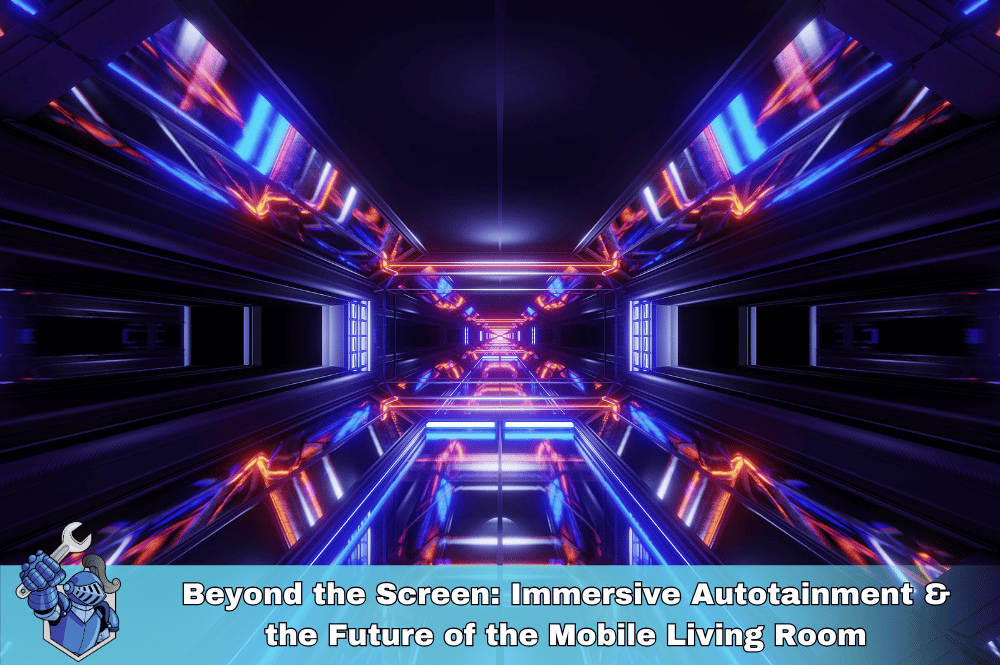
 Subaru Forester: The Unsung Hero of Adventure, Value, and the Long Haul (Owner Insights & VSC Value)
Subaru Forester: The Unsung Hero of Adventure, Value, and the Long Haul (Owner Insights & VSC Value) The Silent Thief: How Micro-Vibrations and Hidden Wear Shorten Your Car's Life (And How to Stop It)
The Silent Thief: How Micro-Vibrations and Hidden Wear Shorten Your Car's Life (And How to Stop It)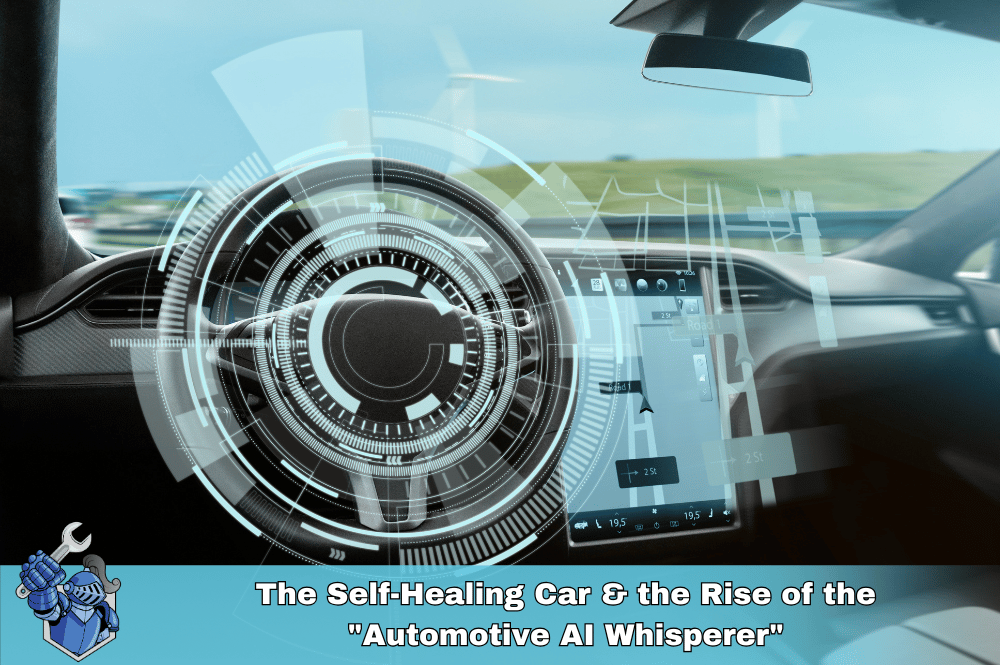 The Self-Healing Car & the Rise of the "Automotive AI Whisperer"
The Self-Healing Car & the Rise of the "Automotive AI Whisperer" The Proactive Home: How Smart Tech & Predictive Analytics are Redefining Home Warranties
The Proactive Home: How Smart Tech & Predictive Analytics are Redefining Home Warranties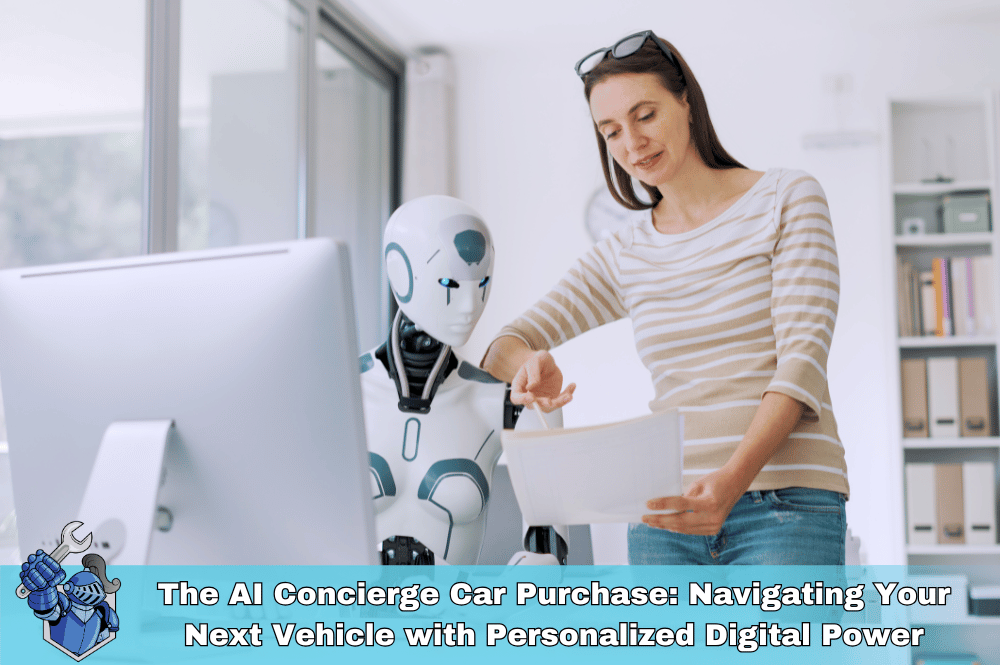 The AI Concierge Car Purchase: Navigating Your Next Vehicle with Personalized Digital Power
The AI Concierge Car Purchase: Navigating Your Next Vehicle with Personalized Digital Power Beyond the Hood: Decoding Your Car's Invisible Language (and Why It Matters to Your Wallet)
Beyond the Hood: Decoding Your Car's Invisible Language (and Why It Matters to Your Wallet) From Depreciation to Appreciation: Monetizing Your Car's Lifecycle in the New Automotive Economy
From Depreciation to Appreciation: Monetizing Your Car's Lifecycle in the New Automotive Economy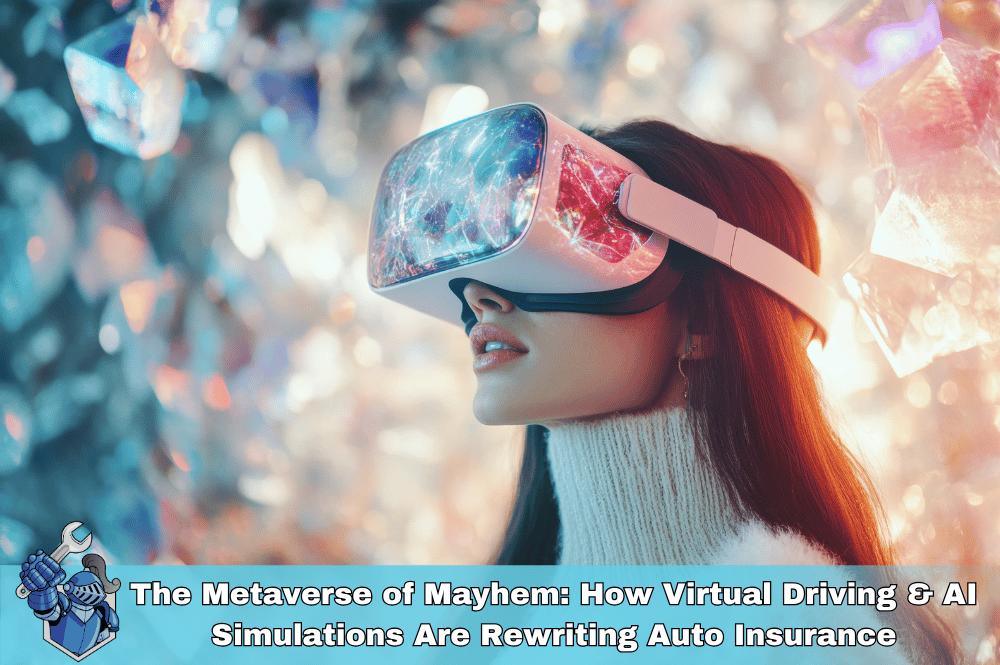 The Metaverse of Mayhem: How Virtual Driving & AI Simulations Are Rewriting Auto Insurance
The Metaverse of Mayhem: How Virtual Driving & AI Simulations Are Rewriting Auto Insurance Don’t Get Scammed: Why Reading Your VSC Contract is Your #1 Defense
Don’t Get Scammed: Why Reading Your VSC Contract is Your #1 Defense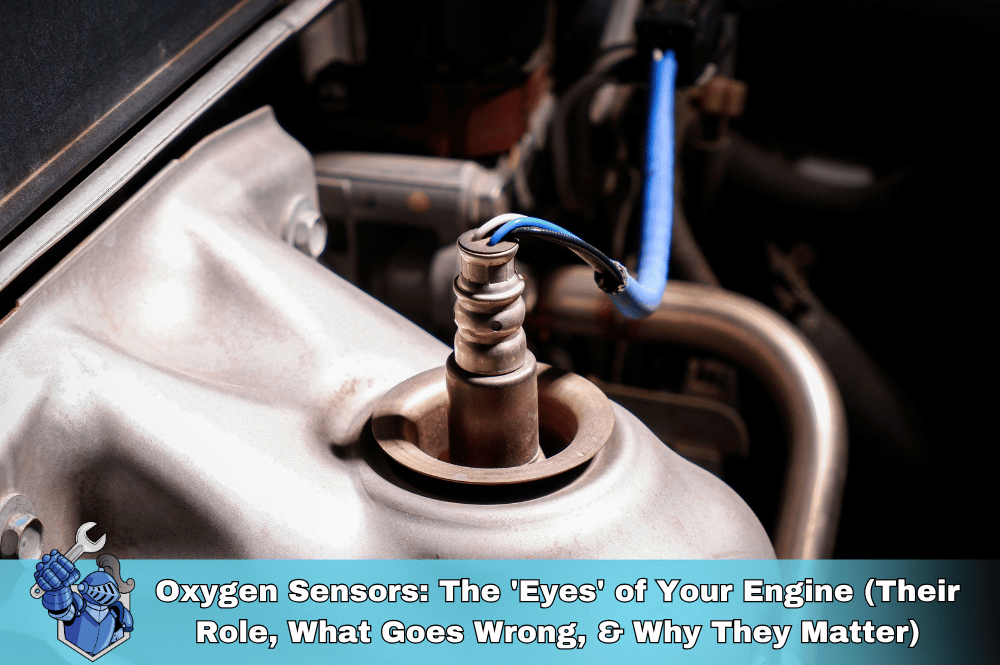 Oxygen Sensors: The 'Eyes' of Your Engine (Their Role, What Goes Wrong, & Why They Matter)
Oxygen Sensors: The 'Eyes' of Your Engine (Their Role, What Goes Wrong, & Why They Matter) Full Tort vs. Limited Tort Auto Insurance: The Ultimate Guide to Protecting Your Rights & Payout
Full Tort vs. Limited Tort Auto Insurance: The Ultimate Guide to Protecting Your Rights & Payout Carvana vs. Traditional Dealerships: The Ultimate Showdown for Your Next Car Purchase
Carvana vs. Traditional Dealerships: The Ultimate Showdown for Your Next Car Purchase 10 Essential Car Prep Tips for Your Family’s Epic Summer Road Trips (2025 Edition)
10 Essential Car Prep Tips for Your Family’s Epic Summer Road Trips (2025 Edition) CV Axles: Putting Power to the Wheels (What They Do, Signs of Wear, & When to Replace)
CV Axles: Putting Power to the Wheels (What They Do, Signs of Wear, & When to Replace) Rideshare Riches: How Much Can YOU Really Earn Driving for Uber & Lyft in 2025?
Rideshare Riches: How Much Can YOU Really Earn Driving for Uber & Lyft in 2025? DriveTime Review 2024/2025: Your Complete A–Z Guide to Buying a Car There
DriveTime Review 2024/2025: Your Complete A–Z Guide to Buying a Car There The Car Computer (ECM/ECU): The Brain of Your Vehicle (Its Functions, Troubleshooting, & Updates)
The Car Computer (ECM/ECU): The Brain of Your Vehicle (Its Functions, Troubleshooting, & Updates) The Ultimate Truck/SUV Beach Driving Guide: Prep, Safety, & Post-Sand Care
The Ultimate Truck/SUV Beach Driving Guide: Prep, Safety, & Post-Sand Care The Mass Airflow Sensor (MAF): Engine's Air Traffic Controller (Function, Symptoms of Failure, & Cleaning)
The Mass Airflow Sensor (MAF): Engine's Air Traffic Controller (Function, Symptoms of Failure, & Cleaning) The Reigning Champion: Why the 2025 Ford Ranger is North America's Truck of the Year
The Reigning Champion: Why the 2025 Ford Ranger is North America's Truck of the Year Serpentine Belt: Powering Your Car's Accessories (Its Job, Signs of Wear, & Replacement)
Serpentine Belt: Powering Your Car's Accessories (Its Job, Signs of Wear, & Replacement) BMW M2: The Pure Driving Machine Reborn?
BMW M2: The Pure Driving Machine Reborn? Car Coolant Flush: The Ultimate Guide to a Healthy Engine & Extended Vehicle Life
Car Coolant Flush: The Ultimate Guide to a Healthy Engine & Extended Vehicle Life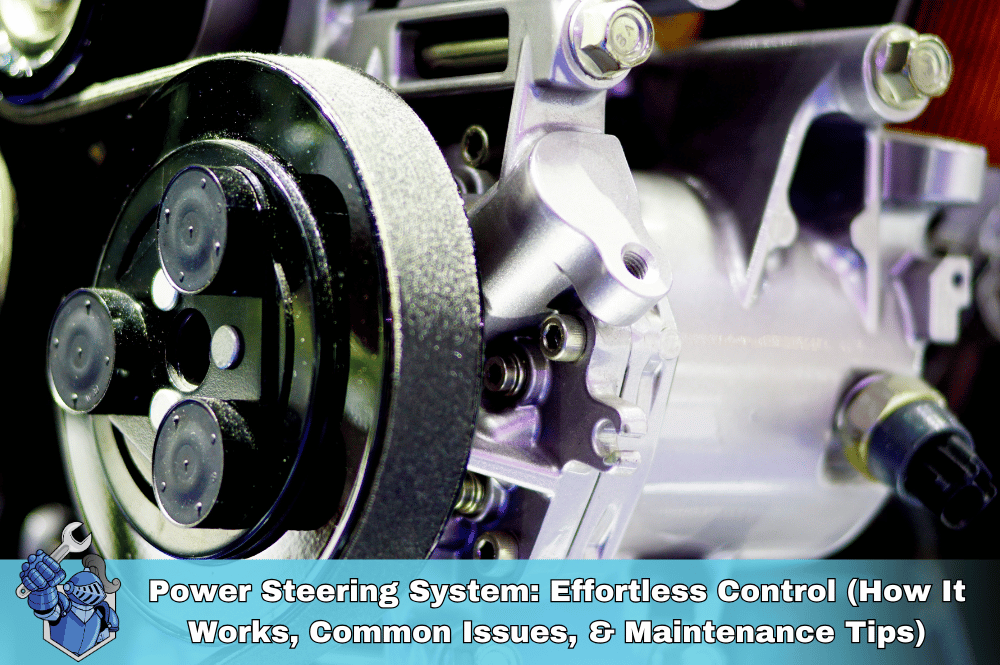 Power Steering System: Effortless Control (How It Works, Common Issues, & Maintenance Tips)
Power Steering System: Effortless Control (How It Works, Common Issues, & Maintenance Tips) The Ultimate Protection Plan: How Life Insurance Drives Your Family’s Future
The Ultimate Protection Plan: How Life Insurance Drives Your Family’s Future End-of-Month Car Deals: Myth or Money-Saver?
End-of-Month Car Deals: Myth or Money-Saver? NobleQuote.com Presents: American National Auto Insurance – Your Complete Guide
NobleQuote.com Presents: American National Auto Insurance – Your Complete Guide Edmunds.com: Your Ultimate Guide to Smarter Car Buying
Edmunds.com: Your Ultimate Guide to Smarter Car Buying The Definitive Guide to Frank Martin's Cars in The Transporter Series
The Definitive Guide to Frank Martin's Cars in The Transporter Series Pre-Existing Conditions and Home Warranties: What You Need to Know Before You Buy
Pre-Existing Conditions and Home Warranties: What You Need to Know Before You Buy Why Your Car Insurance is Skyrocketing in 2025 (and How NobleQuote Can Help)
Why Your Car Insurance is Skyrocketing in 2025 (and How NobleQuote Can Help) The 2025 Toyota Supra: The Grand Finale of a Legend?
The 2025 Toyota Supra: The Grand Finale of a Legend? Clutch: Manual Transmission’s Master Link (How It Transfers Power, Signs of Wear, & Replacement)
Clutch: Manual Transmission’s Master Link (How It Transfers Power, Signs of Wear, & Replacement) Teen Driver Car Insurance Costs & Strategies: How to Get Affordable Coverage for Young Drivers
Teen Driver Car Insurance Costs & Strategies: How to Get Affordable Coverage for Young Drivers Is Your Car Insurance Enough? Unexpected Repairs and the Peace of Mind of a NobleQuote Vehicle Service Contract
Is Your Car Insurance Enough? Unexpected Repairs and the Peace of Mind of a NobleQuote Vehicle Service Contract Esurance Auto Insurance Review 2025: Is It the Right Digital Fit for Your Ride?
Esurance Auto Insurance Review 2025: Is It the Right Digital Fit for Your Ride? Cabin Air Filter: Breathing Easy in Your Car (What It Does, Why It Matters, & When to Replace)
Cabin Air Filter: Breathing Easy in Your Car (What It Does, Why It Matters, & When to Replace) Don't Let a Blown Engine Derail Your Life: The Auto Pro's Guide to Disability Insurance
Don't Let a Blown Engine Derail Your Life: The Auto Pro's Guide to Disability Insurance Godzilla’s Reign: Unpacking the Legend of the 5th Gen Nissan GT-R
Godzilla’s Reign: Unpacking the Legend of the 5th Gen Nissan GT-R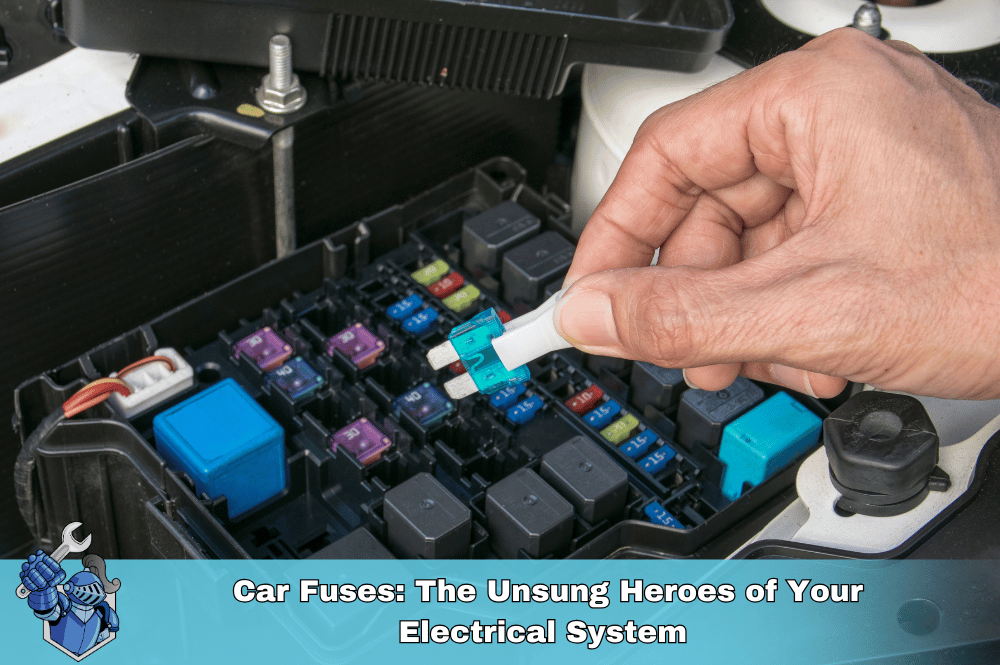 Car Fuses: The Unsung Heroes of Your Electrical System (What They Do, Common Failures, & How to Replace)
Car Fuses: The Unsung Heroes of Your Electrical System (What They Do, Common Failures, & How to Replace) Unlock 200,000 Miles: The Ultimate Preventative Car Maintenance Schedule & Checklist
Unlock 200,000 Miles: The Ultimate Preventative Car Maintenance Schedule & Checklist Protect Your Ride & Your Family: Why Northwestern Mutual Life Insurance Matters for Car Owners
Protect Your Ride & Your Family: Why Northwestern Mutual Life Insurance Matters for Car Owners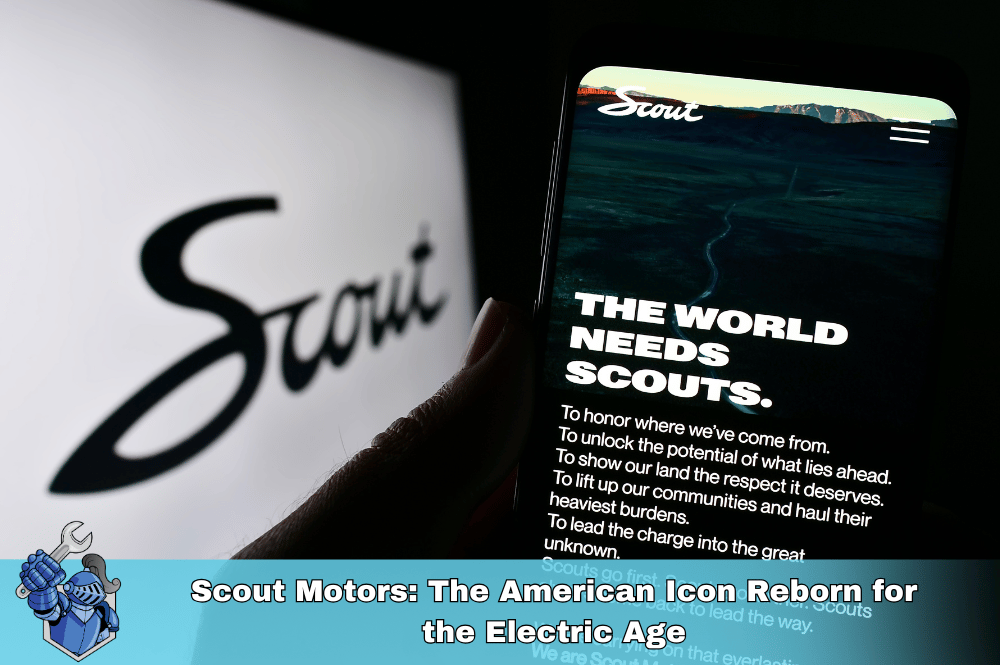 Scout Motors: The American Icon Reborn for the Electric Age
Scout Motors: The American Icon Reborn for the Electric Age How to Replace Wiper Blades: A Step-by-Step DIY Guide (Save Money & See Clearly!)
How to Replace Wiper Blades: A Step-by-Step DIY Guide (Save Money & See Clearly!) The Ultimate Guide to Cheap Car Insurance: Find Your Lowest Rates in 2025
The Ultimate Guide to Cheap Car Insurance: Find Your Lowest Rates in 2025 The 2025 Automotive Retirement Number: What Auto Pros Need to Save for a Comfortable Ride
The 2025 Automotive Retirement Number: What Auto Pros Need to Save for a Comfortable Ride Pre-Purchase Inspection (PPI): Your Essential Checklist Before Buying Any Used Car
Pre-Purchase Inspection (PPI): Your Essential Checklist Before Buying Any Used Car Unearthing Automotive Gold: The Underrated Used Cars You Need to Buy Now
Unearthing Automotive Gold: The Underrated Used Cars You Need to Buy Now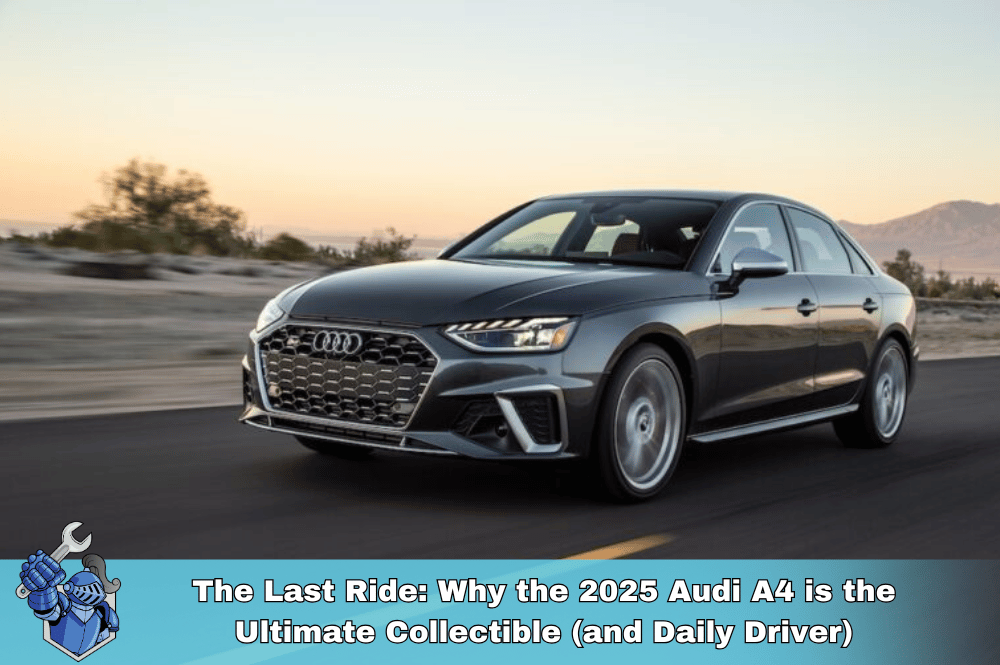 The Last Ride: Why the 2025 Audi A4 is the Ultimate Collectible (and Daily Driver)
The Last Ride: Why the 2025 Audi A4 is the Ultimate Collectible (and Daily Driver) 2025 Corvette ZR1: The Ultimate Guide to Specs, Price, and Performance
2025 Corvette ZR1: The Ultimate Guide to Specs, Price, and Performance Does Driving for Uber/Lyft/DoorDash Void Your Car’s Warranty? & How to Get Covered
Does Driving for Uber/Lyft/DoorDash Void Your Car’s Warranty? & How to Get Covered The Ultimate Guide to Motorcycle Extended Warranties: Is It Worth It for Your Ride?
The Ultimate Guide to Motorcycle Extended Warranties: Is It Worth It for Your Ride? Headlight Restoration & Bulb Replacement: The Ultimate Guide to Perfect Car Lighting
Headlight Restoration & Bulb Replacement: The Ultimate Guide to Perfect Car Lighting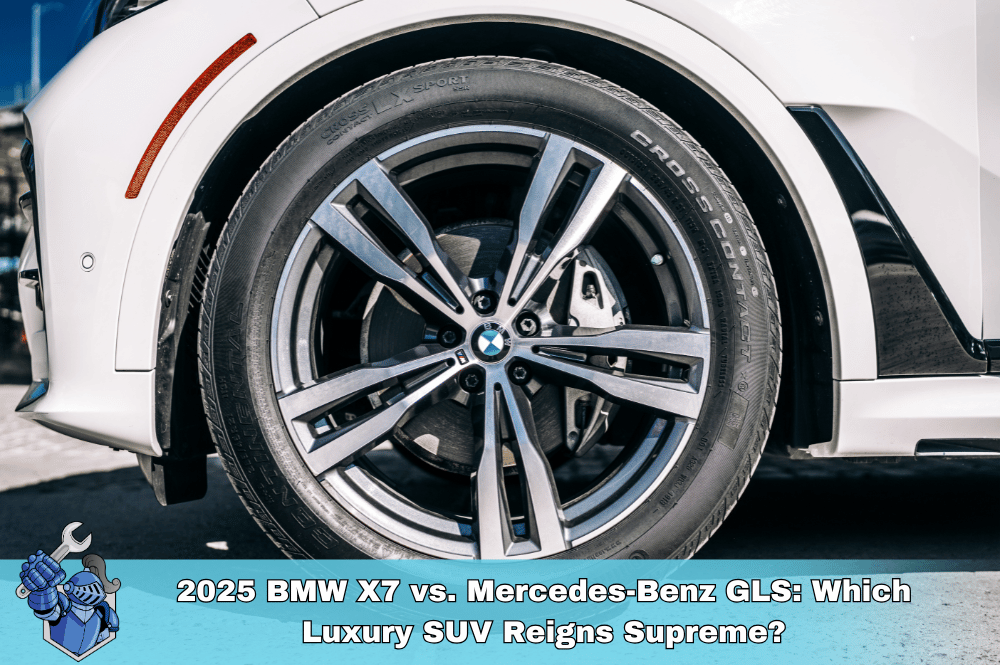 2025 BMW X7 vs. Mercedes-Benz GLS: Which Luxury SUV Reigns Supreme?
2025 BMW X7 vs. Mercedes-Benz GLS: Which Luxury SUV Reigns Supreme? Barbie's Dream Car: The Ultimate EV Conversion? (And Why Even Fantasy Needs a Real Warranty)
Barbie's Dream Car: The Ultimate EV Conversion? (And Why Even Fantasy Needs a Real Warranty) Blown Head Gasket: The $2,500+ Repair Nightmare That Catches Car Owners Off Guard – Learn How to Prepare
Blown Head Gasket: The $2,500+ Repair Nightmare That Catches Car Owners Off Guard – Learn How to Prepare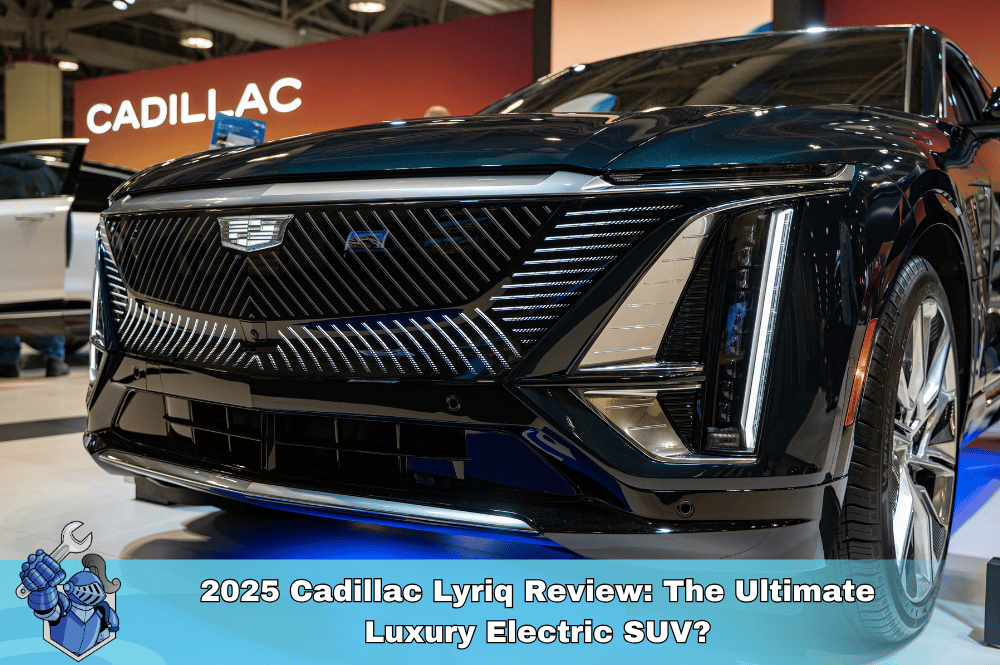 2025 Cadillac Lyriq Review: The Ultimate Luxury Electric SUV?
2025 Cadillac Lyriq Review: The Ultimate Luxury Electric SUV? Pep Boys: Your Complete Guide to Auto Parts, Service & Repair (2025 Edition)
Pep Boys: Your Complete Guide to Auto Parts, Service & Repair (2025 Edition) Drive Smarter: Unlock Vehicle Protection with 0% APR Service Contract Payments
Drive Smarter: Unlock Vehicle Protection with 0% APR Service Contract Payments 2025 Harley-Davidson Sportster S: The Ultimate Review & Buyer’s Guide
2025 Harley-Davidson Sportster S: The Ultimate Review & Buyer’s Guide New Jersey Car Insurance Laws 2025–2026: Your Essential Guide to What’s Changed & What’s Next
New Jersey Car Insurance Laws 2025–2026: Your Essential Guide to What’s Changed & What’s Next The Ultimate Dodge Viper Guide: All Generations, Specs, & History (1991–2017)
The Ultimate Dodge Viper Guide: All Generations, Specs, & History (1991–2017) Meineke Oil Change: Everything You Need to Know (Prices, Packages, and Why It Matters)
Meineke Oil Change: Everything You Need to Know (Prices, Packages, and Why It Matters) The Connected Car’s 'Black Box': How Your Data Impacts Warranty Claims
The Connected Car’s 'Black Box': How Your Data Impacts Warranty Claims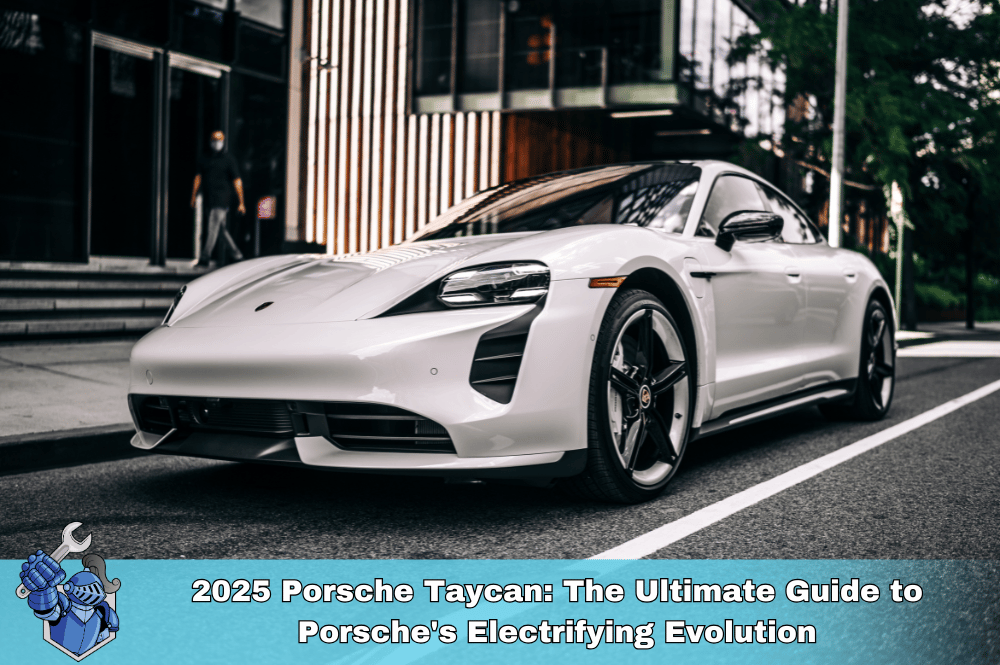 2025 Porsche Taycan: The Ultimate Guide to Porsche's Electrifying Evolution
2025 Porsche Taycan: The Ultimate Guide to Porsche's Electrifying Evolution Automatic vs. Hand Wash: Which is Truly Safer for Your Car's Finish?
Automatic vs. Hand Wash: Which is Truly Safer for Your Car's Finish? The Ultimate Toyota RAV4 Guide: Every Generation Explored (1994–Present)
The Ultimate Toyota RAV4 Guide: Every Generation Explored (1994–Present) Homeowners Insurance vs. Home Warranty: A Clear Breakdown for Every Homeowner
Homeowners Insurance vs. Home Warranty: A Clear Breakdown for Every Homeowner Erie Auto Insurance Review 2025: Rates, Discounts, & Why Drivers Choose It
Erie Auto Insurance Review 2025: Rates, Discounts, & Why Drivers Choose It The Ultimate Bentley Bentayga Buyer’s Guide: Every Model, Trim & Real-World Ownership Costs
The Ultimate Bentley Bentayga Buyer’s Guide: Every Model, Trim & Real-World Ownership Costs The Ultimate Lamborghini Urus Buyer's Guide: Every Generation, Model, & What You Need to Know Before Owning
The Ultimate Lamborghini Urus Buyer's Guide: Every Generation, Model, & What You Need to Know Before Owning Mazda6 Generations Explained: A Complete History & Buyer's Guide (All Models)
Mazda6 Generations Explained: A Complete History & Buyer's Guide (All Models) The True Cost of Luxury Car Repair: Are You Paying Too Much Without a Vehicle Service Contract?
The True Cost of Luxury Car Repair: Are You Paying Too Much Without a Vehicle Service Contract? Chubb Auto Insurance: The Premier Choice for Luxury, Exotic, and Classic Cars
Chubb Auto Insurance: The Premier Choice for Luxury, Exotic, and Classic Cars Full Tort vs. Limited Tort in Pennsylvania: Which is Right for You? (A Driver's Definitive Guide)
Full Tort vs. Limited Tort in Pennsylvania: Which is Right for You? (A Driver's Definitive Guide)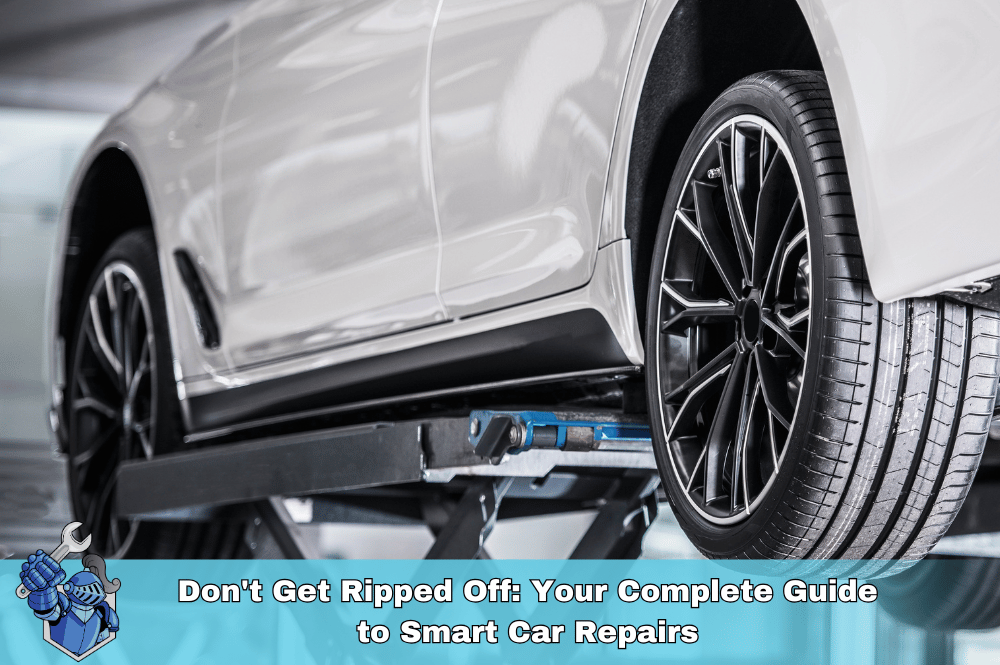 Don't Get Ripped Off: Your Complete Guide to Smart Car Repairs
Don't Get Ripped Off: Your Complete Guide to Smart Car Repairs Cash vs. Car Loan: Which is Right for Your Next Vehicle Purchase?
Cash vs. Car Loan: Which is Right for Your Next Vehicle Purchase? The New Land Rover Defender: Redefining Rugged Luxury (Your Ultimate Review & Buying Guide)
The New Land Rover Defender: Redefining Rugged Luxury (Your Ultimate Review & Buying Guide) The Silent Killer: Why Not Driving Your Car Wears It Out Faster Than You Think
The Silent Killer: Why Not Driving Your Car Wears It Out Faster Than You Think Beyond the Basics: Unpacking AIG's Elite Auto Insurance for High-Net-Worth Drivers
Beyond the Basics: Unpacking AIG's Elite Auto Insurance for High-Net-Worth Drivers The Ultimate 2025 Hyundai Santa Fe Review: Your Complete Buyer’s Guide
The Ultimate 2025 Hyundai Santa Fe Review: Your Complete Buyer’s Guide The Repair Shop Rejection Reflex: Why Customers Say No to Essential Car Fixes
The Repair Shop Rejection Reflex: Why Customers Say No to Essential Car Fixes Rolls-Royce Cullinan Review: Is This the World's Ultimate Luxury SUV?
Rolls-Royce Cullinan Review: Is This the World's Ultimate Luxury SUV? Amica Auto Insurance Review 2025: Unpacking Value, Dividends, and Why It Consistently Ranks #1 for Service
Amica Auto Insurance Review 2025: Unpacking Value, Dividends, and Why It Consistently Ranks #1 for Service Get Your Price Instantly: The Smart Way to Buy & Manage Your Car's Extended Warranty Online with NobleQuote
Get Your Price Instantly: The Smart Way to Buy & Manage Your Car's Extended Warranty Online with NobleQuote The Ultimate 2025 Nissan Armada Buyer's Guide: Everything You Need to Know
The Ultimate 2025 Nissan Armada Buyer's Guide: Everything You Need to Know Rideshare Safety Unlocked: The Ultimate Guide to Secure Uber & Lyft Rides
Rideshare Safety Unlocked: The Ultimate Guide to Secure Uber & Lyft Rides The Ultimate Guide to Home Warranty Plumbing Coverage: What's Covered, What's Not, and Why It Matters
The Ultimate Guide to Home Warranty Plumbing Coverage: What's Covered, What's Not, and Why It Matters The End of an Era: Why the Nissan Titan Was Discontinued (And What It Means for Truck Buyers)
The End of an Era: Why the Nissan Titan Was Discontinued (And What It Means for Truck Buyers) Drive: The Ryan Gosling Movie That Defined a Generation of Car Culture
Drive: The Ryan Gosling Movie That Defined a Generation of Car Culture CAN Bus Explained: How Your Car's Digital Network Connects Everything (and Why It Matters)
CAN Bus Explained: How Your Car's Digital Network Connects Everything (and Why It Matters) Confessions of a Car Salesperson: What They Don’t Want You to Know (And How to Use It to Your Advantage)
Confessions of a Car Salesperson: What They Don’t Want You to Know (And How to Use It to Your Advantage) The Ultimate Guide to the 2025 Jaguar F-Pace: Performance, Luxury & Value
The Ultimate Guide to the 2025 Jaguar F-Pace: Performance, Luxury & Value Water Damage & Your Home Warranty: Understanding What's Truly Covered (and What Isn't!)
Water Damage & Your Home Warranty: Understanding What's Truly Covered (and What Isn't!) Stop The Steal: Your Ultimate Guide to Catalytic Converter Theft Prevention
Stop The Steal: Your Ultimate Guide to Catalytic Converter Theft Prevention The #1 Reason the 2015 Toyota Corolla Still Dominates Used Car Sales (And Why You Need One)
The #1 Reason the 2015 Toyota Corolla Still Dominates Used Car Sales (And Why You Need One) The Ultimate Hummer H2 Buyer’s Guide: Common Problems, Reliability, and What to Know Before You Buy
The Ultimate Hummer H2 Buyer’s Guide: Common Problems, Reliability, and What to Know Before You Buy The Ultimate Guide to Subprime Auto Financing: Your Path to Car Ownership
The Ultimate Guide to Subprime Auto Financing: Your Path to Car Ownership Short Bed vs. Long Bed Trucks: The Ultimate Comparison Guide for 2025
Short Bed vs. Long Bed Trucks: The Ultimate Comparison Guide for 2025 How to Pump Gas: A Complete Step-by-Step Guide for Every Driver
How to Pump Gas: A Complete Step-by-Step Guide for Every Driver